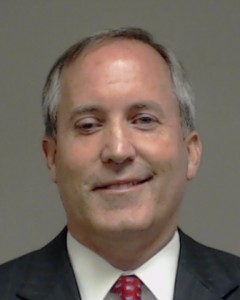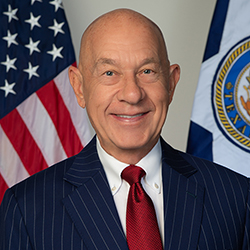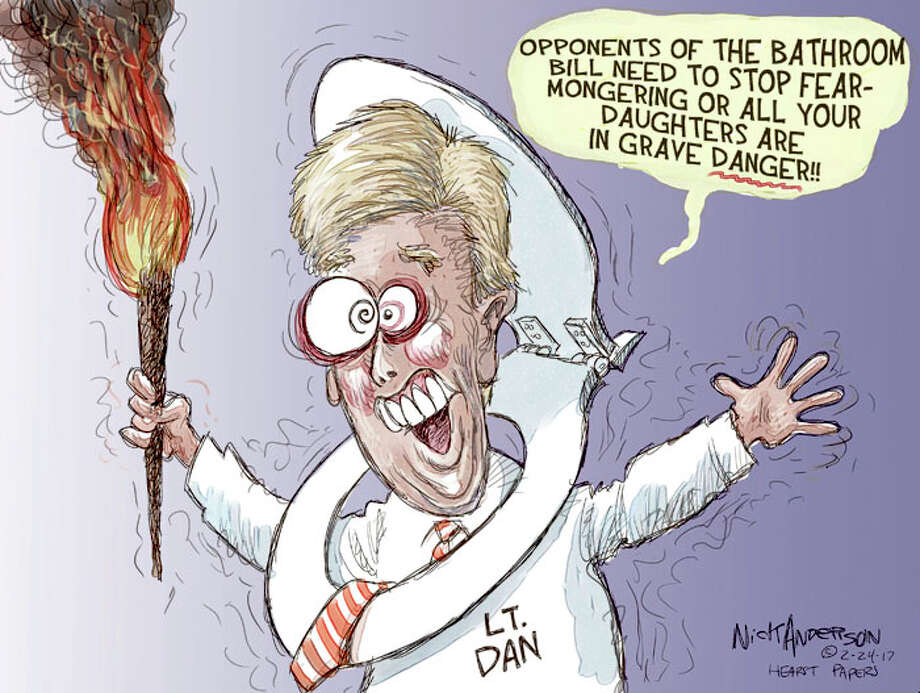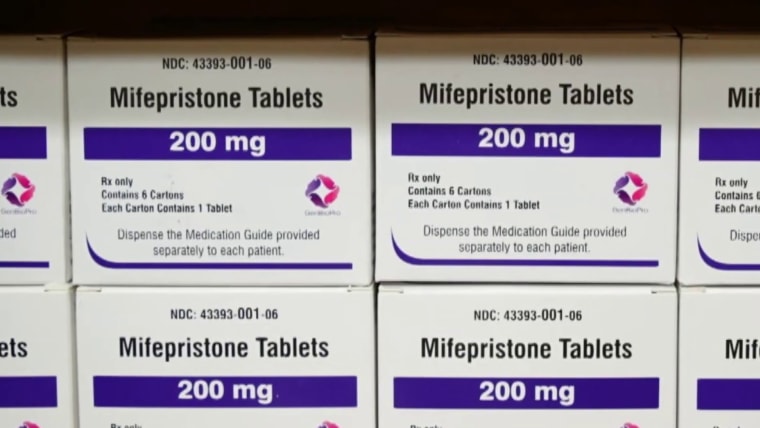Weird.
As soon as measles started spreading in West Texas, El Paso health officials began preparing schools and day care facilities for the day the virus would inevitably arrive.
But now that it’s here, it’s not kids who are making up the brunt of the cases — it’s adults. Two-thirds of El Paso’s cases so far are among people over the age of 18, and only 7% are among school-age children.
Anyone unvaccinated can contract measles, but it tends to hit children first and hardest. Most children are not fully vaccinated until they are five years old and they spend more time than adults in congregate settings where the virus can spread quickly. More families of young children are opting out of vaccines, leaving them exposed.
Gaines County, the epicenter of the outbreak, followed this traditional path, starting with school-age children before spreading to adults. Almost six months into what is now the country’s largest measles outbreak since 2000, Texas’ 722 cases are about evenly spread between the three age groups the state divides them into: under four, 5-17 and adults.
El Paso stands out for its high rate of adult infections. The county only has 56 cases so far, the third-highest among Texas counties but still too small of a sample size to conclude much, public health experts say. But if this trend holds, it may be a credit to El Paso’s high vaccination rates among kids — 96% of kindergartners and 98% of seventh graders are fully vaccinated for measles, higher than the percent required to maintain herd immunity. The state does not track adult vaccination rates.
“That is one of the protective factors that we feel is helping us,” said El Paso public health authority Hector Ocaranza. “But still we’re going to continue to see cases of measles that are going to be clustering in some of the schools or day cares that have low immunization rates.”
These surprising initial statistics have required public health officials to change their outbreak response on the fly. They’re aiming more of their vaccination events specifically at adults, especially as many health care providers who serve adults do not have the measles-mumps-rubella vaccine on hand the way pediatricians do.
“Most of the adults, they don’t remember whether they’ve had the MMR vaccine,” Ocaranza said. “They were kids, and nobody has a shot record.”
[…]
Healthy adults are generally able to fight off the worst of a measles infection, but anyone who gets infected runs the risk of it morphing into pneumonia or worse, said Ben Neuman, a virologist at Texas A&M University. Three of the five hospitalizations in El Paso so far are in adults.
And anyone with measles will spread it in the community, potentially to children too young to be vaccinated who are especially vulnerable to the worst outcomes, like encephalitis, deafness, blindness and permanent brain damage.
“Especially kids two years and under, their immune systems are just bad at everything,” Neuman said. “We’re all sort of helping them out with our herd immunity.”
Neuman said it’s possible that El Paso’s high rate of adult cases is “the first sign of something weird,” but he anticipates the data will start to look more normal as more people get tested.
As a reminder, if you’re not sure what your vax status is for the MMR, you can go get yourself a booster. It will only help, and if you’re the least bit anxious about it or at higher risk, there’s no good reason not to.
Good on El Paso for having an above-average child vaccination rate, which has likely helped slow the spread of the outbreak. I’ve been concerned about that since cases started popping up in the big urban centers, but so far so good. Lubbock is a slightly different story.
When Kelly Johnson Pirtle was counting down the days to her due date last year, she pictured her future as a new mom. She thought of family visits, friends becoming her village, and a healthy child.
She never considered that she might have to shield her newborn son John from a once-eradicated disease.
“You want your kids to grow up in a world that’s healthy and moving forward,” Johnson said. “That’s not true during the first few months of his life. It makes me sad.”
Pirtle is one of many new parents in Lubbock who are growing more anxious as the measles outbreak, and vaccine skepticism, spreads. And Lubbock parents aren’t the only ones terrified of their young children contracting the contagious virus. From January to April 30, 7,107 babies have received a dose of the measles-mumps-rubella vaccine early, according to the Texas Department of State Health Services. It’s the state’s highest number in the last six years. It could be even higher since the data only includes children whose parents opted into submitting their information to the state.
The outbreak has ballooned to 722 cases in Texas since it began in January. According to the Centers for Disease Control and Prevention, the measles outbreak is now the largest single outbreak since the U.S. declared the disease eliminated 25 years ago. Nine new cases were reported Friday, the lowest number since February. However, health officials can’t consider an outbreak over until there’s been a 42-day period without a new case.
As the outbreak spreads beyond West Texas, skepticism about the vaccine has intensified, including at a national level. U.S. Secretary of Health and Human Services Robert F. Kennedy Jr., a known vaccine skeptic, has spread misinformation about the vaccine. Earlier this month, Kennedy ordered federal health agencies to research new treatments for measles. Public health officials have said two doses of the MMR vaccine is the most effective way to prevent measles.
However, a lot of time stands between those two doses and a sense of security for new parents. Doctors recommend that children get their first dose of the MMR vaccine when they are 12 months old. The timeline is shorter — just six months — for children in areas with an outbreak.
That is the case in Lubbock, about 87 miles northeast of Gaines County where the outbreak started and more than 400 cases have been confirmed. There have been 53 confirmed cases in Lubbock County. Lubbock, with a population of 267,000, is the largest city in the South Plains and serves as a medical hub for the region. Due to a dearth of rural hospitals and physicians, people from all over the region flock to Lubbock for health care.
It has left the city and its residents to figure out how to protect themselves when so much of the outbreak is out of their control. Some new parents in Lubbock have reverted to COVID-era precautions — limited contact with people outside the home and avoiding crowded places. On social media groups, women ask other moms how young babies infected with measles fared, and share details on vaccine clinics. Others share locations where cases have been reported for other parents to avoid.
And at this point, they aren’t just battling the outbreak. They are also battling the consequences of a growing distrust about the vaccine, including school and child care centers closing as cases pop up.
A 2024 KFF study found that exemption rates have gone up nationwide. The amount of kindergartners in the U.S. who were exempted from at least one required vaccine increased to 3.3%. Since 2018, the requests to the Texas Department of State Health Services for an exemption form have doubled from 45,900 to more than 93,000 in 2024.
In Lubbock County, 92% of kindergarteners reported being vaccinated against measles in the 2023-2024 school year, about 2 percentage points lower than the state average, according to latest state data.
I wish all the people who are taking this seriously well. It’s a real shame that especially in a place like Lubbock where the sick people need to go to get care that new parents have to act like we’re back in the COVID days. Hopefully that won’t be for too much longer, but we know it’s not truly going to go away.
One small bright side of this outbreak is that there has been an increase in children getting vaccinated.
More Texas parents are opting to vaccinate their babies early against measles, nearly a 4.5-fold increase so far this year compared to 2019, according to the Texas Department of State Health Services.
From January through April, 7,107 children between the ages of 6 months and 11 months were vaccinated for measles, which is typically reserved for infants about to travel internationally or living in a measles outbreak area. Otherwise, doctors usually administer the first dose of the vaccine when they turn 1 year old.
For the same period in 2019, only 1,591 children between 6 months old and 11 months old were vaccinated for measles.
[…]
“It does show that parents really are scared, and that parents don’t want to wait,” said Nina Masters, a senior applied research scientist at Truveta, a Washington-based company that is studying Texas’ vaccination data. “They don’t want to wait 12 months to get their child vaccinated. They want to wait six months and one day, and they want to do it as soon as they can.”
And, since state data only reflects vaccine information parents voluntarily give to them, the number of babies receiving the vaccine early is probably higher. Masters’ company estimates an 11-fold increase in the number of early measles vaccine shots in Texas between 2019 and 2025, according to a study released this week.
The Truveta study found that in March and April of this year, 20% of all first measles vaccine doses given to 2-year-olds and younger were in babies who were 6 months old to 11 months old.
“This is a really big jump,” Masters said.
Increased vaccine uptake is among the reasons local health officials have seen the number of new measles cases drop in recent days. Last week, only nine new cases were reported, the lowest number over a 7-day period since February. Other factors contributing to the slowdown include natural immunity, quick identification of cases by providers and public health workers, and more infected people staying home because of better measles awareness, officials say.
[…]
Because children younger than one have less developed immune systems, the “zero” or earlier dose is weaker than a regular vaccine and offers just enough protection to cover the child, but not enough to offer lifelong protection, said Katherine Wells, Lubbock’s health director.
Wells said if she had a 6-month-old child, she would have them vaccinated with an earlier dose.
For the past few months, Texas health officials have asked parents to consider this earlier dose if they plan to travel or live in the outbreak area or plan to travel internationally.
West Texas public health officials have posted flyers throughout the region and held press conferences and vaccination clinics to encourage more people to vaccinate against measles, which is the most effective way to prevent infection. Pediatricians in West Texas have been emailing and texting patients to let them know they can vaccinate children earlier than 12 months old.
Lubbock, where 53 measles cases have been reported, is 75 miles from Gaines County, where the measles outbreak began in late January. Wells said Wednesday her department has distributed 500 more measles doses than they normally do this year, mostly to children. She said pediatricians in the area are responsible for about another 2,500 more than normal and private physicians have administered most of the early doses to babies.
As with the measles cases, the count of new vaccinations is likely too low, as the data is incomplete and not everyone reports getting the shots. And I’m glad to hear that there’s a nice increase in Lubbock as well. I really hope this is a multi-year trend now and not just a fear-induced bump. That would still be better than nothing, I would just like to think that there will be some lasting effect.
Also, after reading this NBC News story on the same topic, I wonder how much of this is people pushing up the schedule for their kids’ shots – in other words, people who would have gotten their kids vaxxed anyway but just got on it sooner because of the outbreak – and how much of it is people who for whatever the reason might have delayed or failed to get their kids vaxxed doing so. Clearly some, probably most, of it is the former, but surely some is the latter as well. That’s where the real difference will be made.
Because look, we can use all the help we can get.
A government report released on Thursday covering wide swaths of American health and wellness reflects some of the most contentious views on vaccines, the nation’s food supply, pesticides and prescription drugs held by Health and Human Services Secretary Robert F. Kennedy Jr.
The much-anticipated “Make America Healthy Again” report calls for increased scrutiny of the childhood vaccine schedule, a review of the pesticides sprayed on American crops and a description of the nation’s children as overmedicated and undernourished.
[…]
Increased scrutiny of childhood vaccines — credited with saving millions of people from deadly diseases — figures prominently in the report. It poses questions over the necessity of school mandates that require children to get vaccinated for admittance and suggestions that vaccines should undergo more clinical trials, including with placebos.
Kennedy, a longtime vaccine critic, has raised doubts about the safety of shots even as a measles outbreak has sickened more than 1,000 Americans. This week, Kennedy’s health department moved to limit U.S. access to COVID-19 shots.
The report does not provide any evidence that the childhood vaccine schedule, which includes shots for measles, polio and the chickenpox, is to blame for rising obesity, diabetes or autism rates, said Amesh Adalja, an infectious disease physician at Johns Hopkins University.
“It’s not as if they’re positing any kind of causal link,” Adalja said, adding that Kennedy is “is trying to devalue vaccines in the minds of Americans.”
We are awash in bullshit, and people like RFK Jr are out there spraying it around. I don’t know what things are going to look like on the other side of this, but it’s not great right now.
Ahead of the Friday case count update but after the stories above came out, we learn that measles has arrived in Central Texas.
The Texas Department of State Health Services (DSHS) confirmed a case of measles in Atascosa County, just south of San Antonio, on April 21, that was determined to be linked to the West Texas outbreak. The exposure was centered west of Poteet.
On Tuesday, another case in Kyle was confirmed.
With a population of about 63,000, Kyle is located in Hays County on the Interstate 35 corridor between San Marcos and Austin.
These cases are the closest San Antonio has come to a brush with the highly infectious disease since health authorities warned in late February that a West Texas resident diagnosed with measles spent a weekend visit in San Antonio.
Dr. Jason Bowling, an infectious disease specialist and chief epidemiologist at University Health, said that while he is glad there has not been a case in Bexar County, it wouldn’t take much given the outbreaks nationwide and how contagious the pathogen really is — many times more than the COVID-19 virus, for example.
[…]
The recent deadly measles outbreak in Texas appears to have driven an increase in the number of people who are vaccinated against measles, according to data from DSHS.
Though the data is incomplete because most people have not opted in to the Texas immunization registry, more than 320,000 people statewide have received the MMR vaccine since the start of the year versus over 277,000 in the first six months of 2024.
In West Texas where the outbreak is concentrated, that number doubled, from just over 7,500 to over 13,600.
Vaccination rates in Atascosa County are among the highest in the state with 98.5% of kindergartners and 99% of seventh graders having received the MMR vaccine.
The rates are slightly lower in Hays County, with 95% of kindergartners and 96% of seventh graders. Adult vaccination rates are not available.
Good for Atascosa and Hays Counties, hopefully their high vax rates will keep this from spreading too much. I will continue to monitor it, however often I post about it.
And that brings me to the latest update.
The total number of confirmed cases linked to the measles outbreak is now up to 728 in Texas, according to the latest update from the Texas Department of State Health Services (DSHS). That’s a total of six new cases since Tuesday’s update.
Ninety-four people have been hospitalized with measles since it first broke out in Gaines County in January.
The DSHS underscores that this is the total number of people hospitalized over the course of the outbreak. It is not, however, the current number of people in the hospital.
Based on the most recent data, DSHS has identified designated outbreak counties with ongoing measles transmission: Cochran, Dawson, Gaines, Lamar, Lubbock, Terry and Yoakum.
On Thursday, state and local officials confirmed a measles case in Brewster County. This is the first reported case to appear in the Big Bend region since a measles outbreak began earlier this year in West Texas near the New Mexico border.
The DSHS said that the case was directly linked to the ongoing Texas outbreak that began in Gaines County in January.
There were four new cases in that Tuesday update, so ten for the week. This story has a nice graph showing the total case numbers, and the curve definitely flattened as of the May 6 update. We’ll see if we maintain this new roughly-ten-cases-a-week pace going forward. Stay safe out there.






















